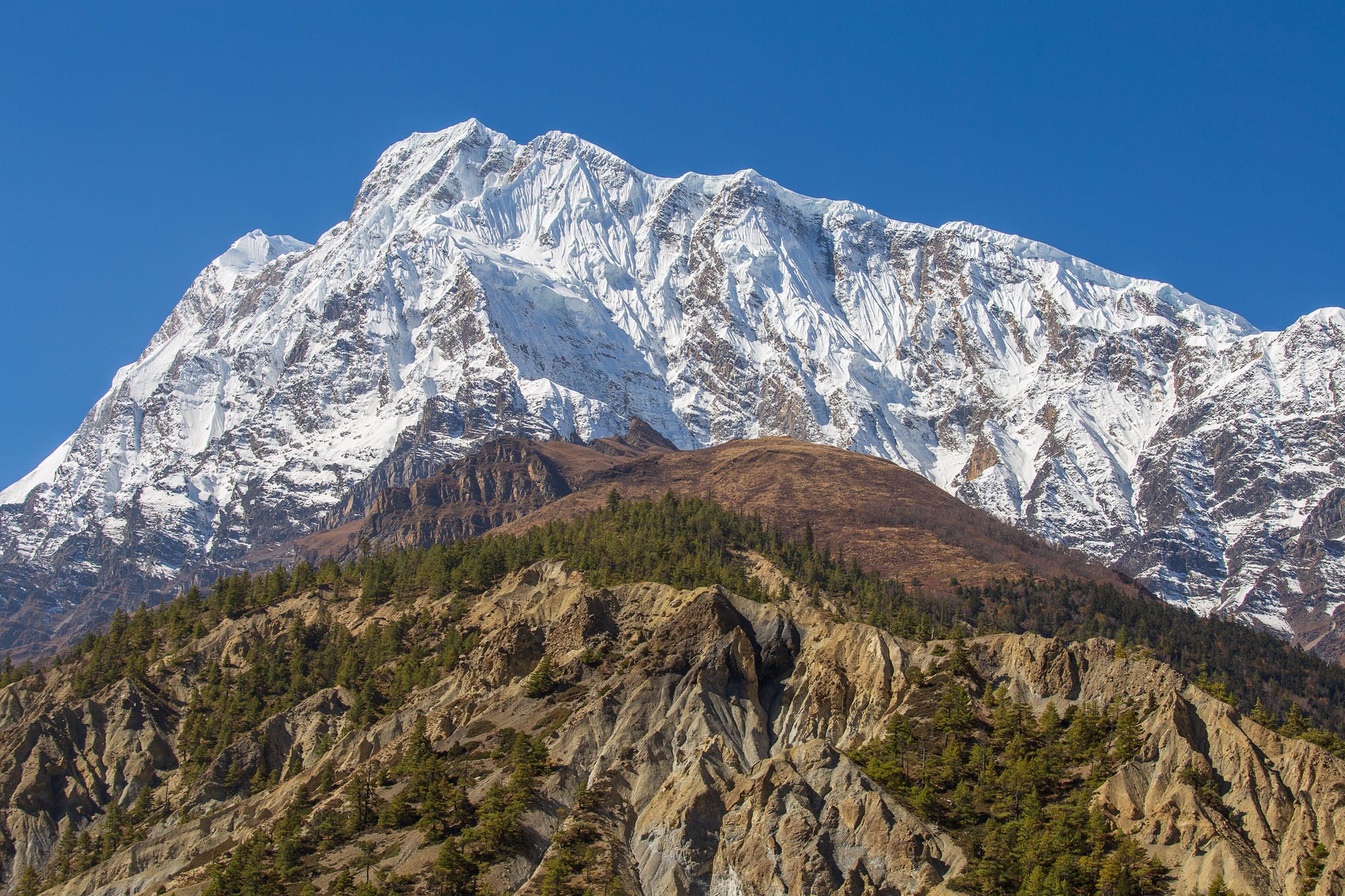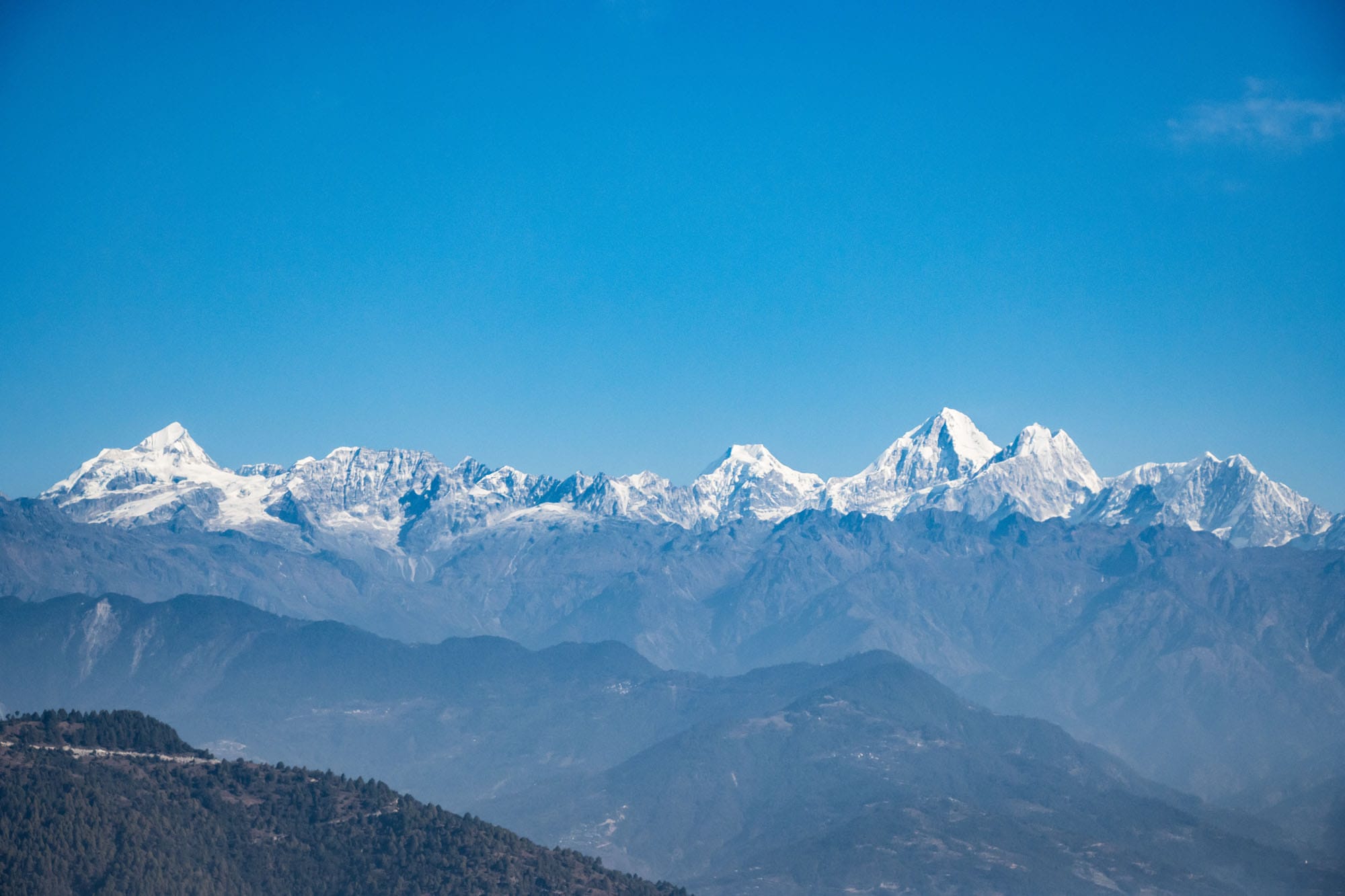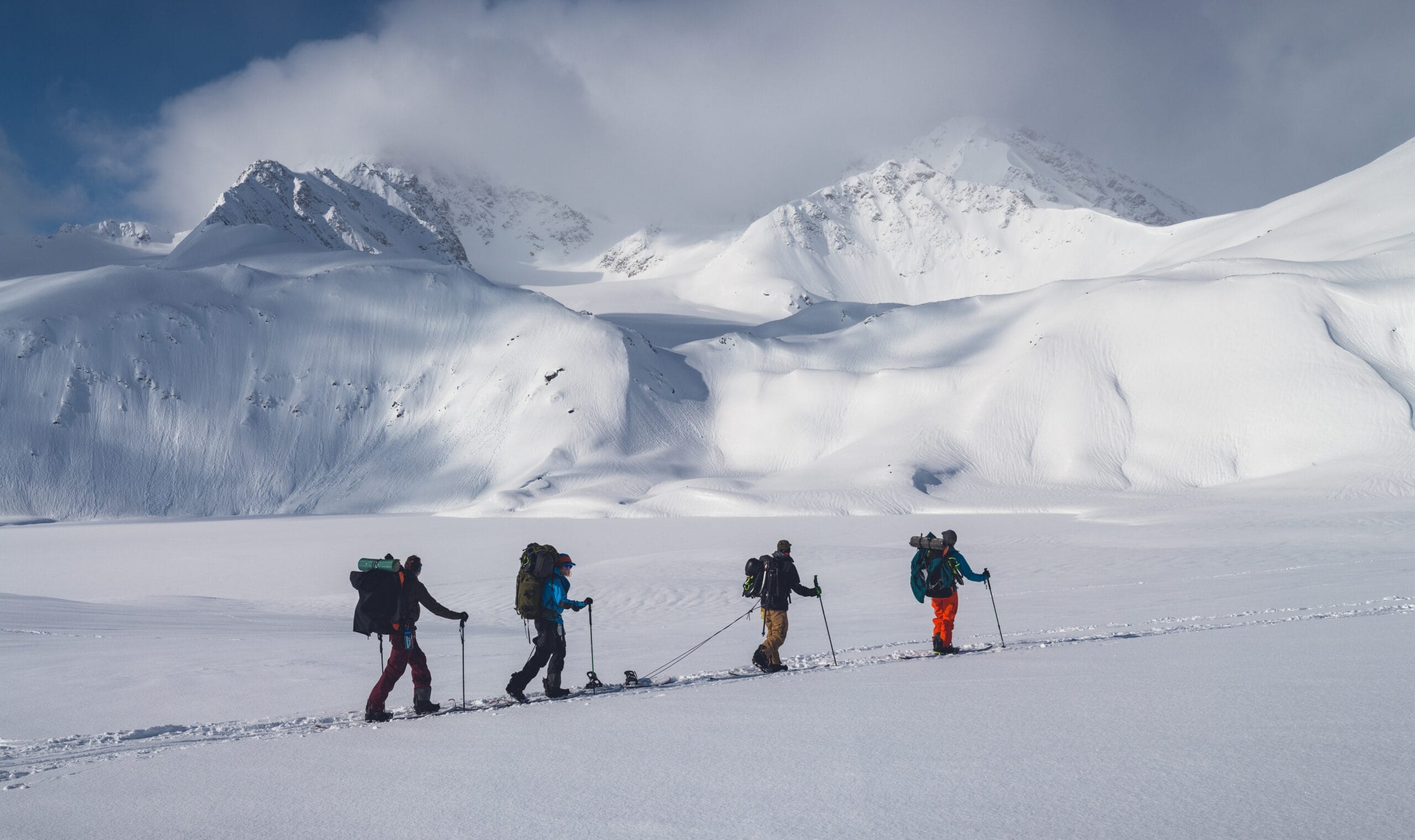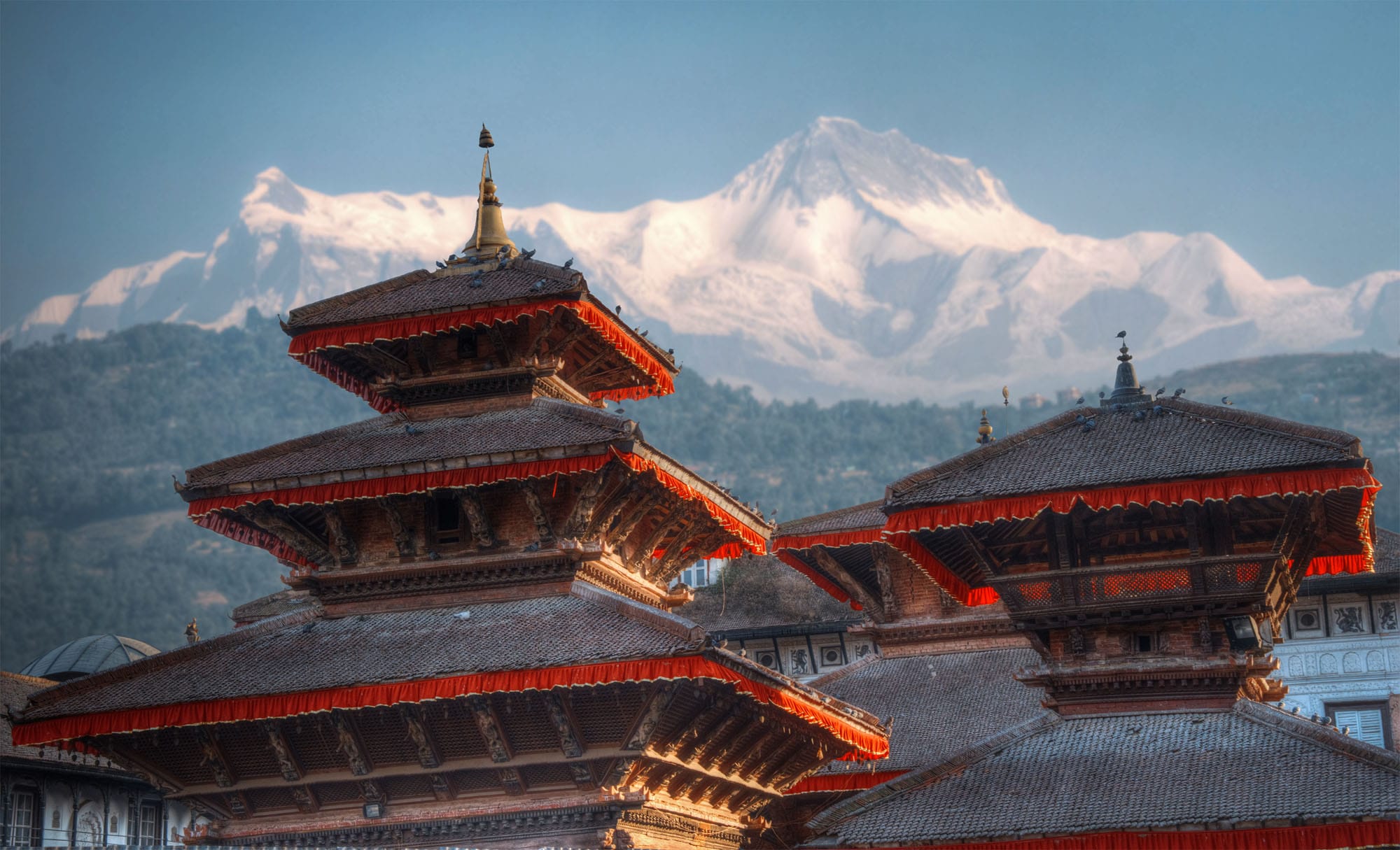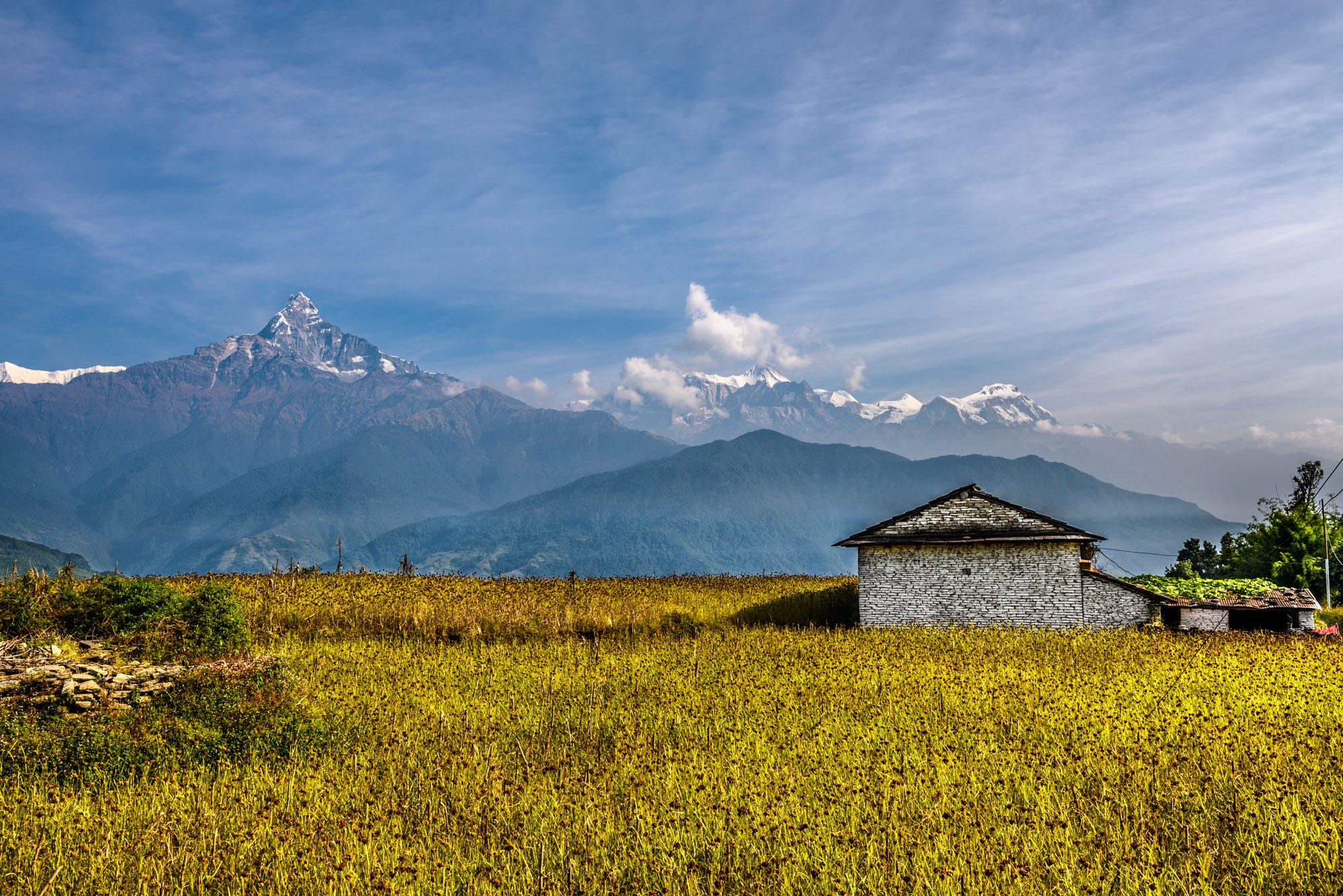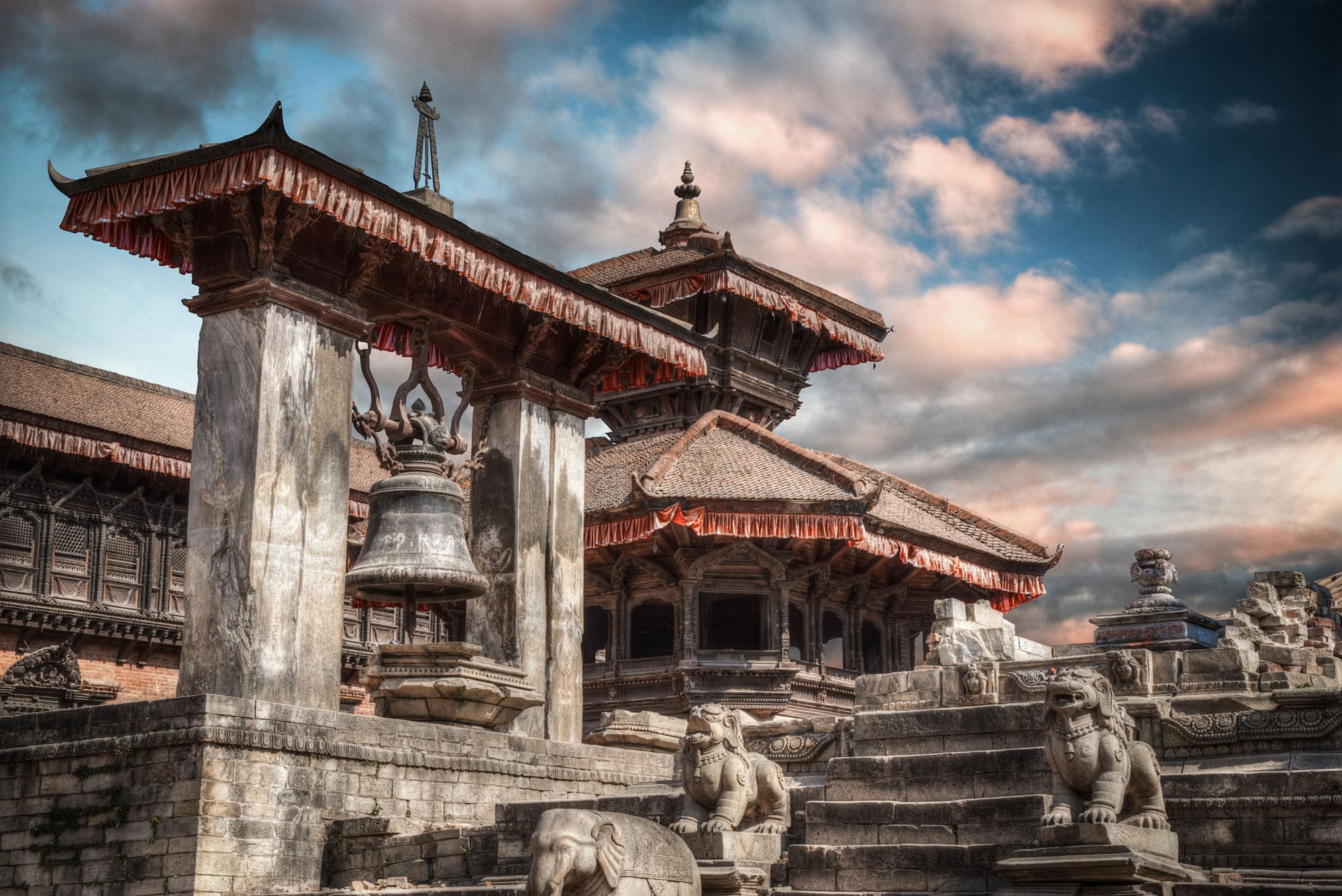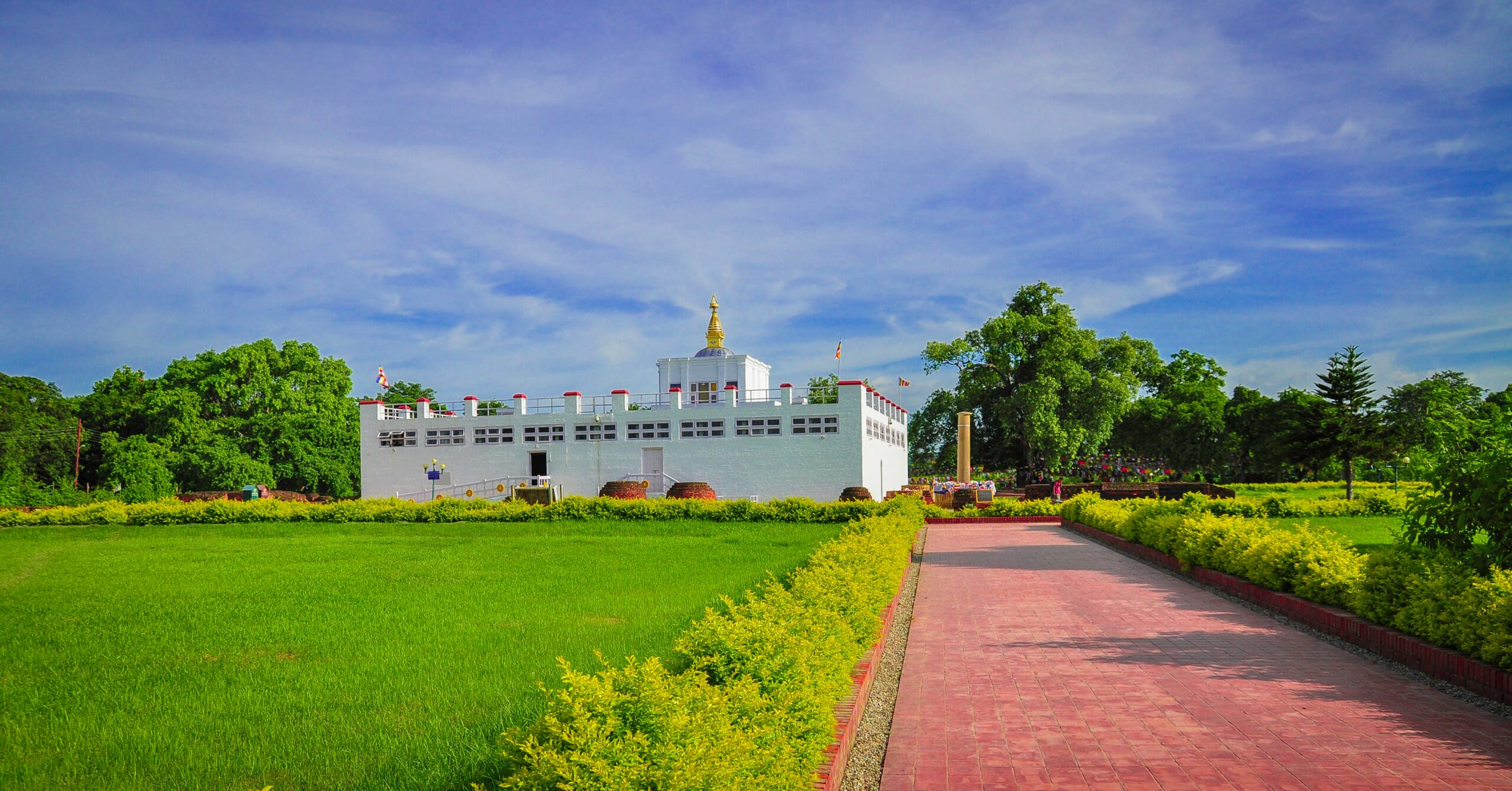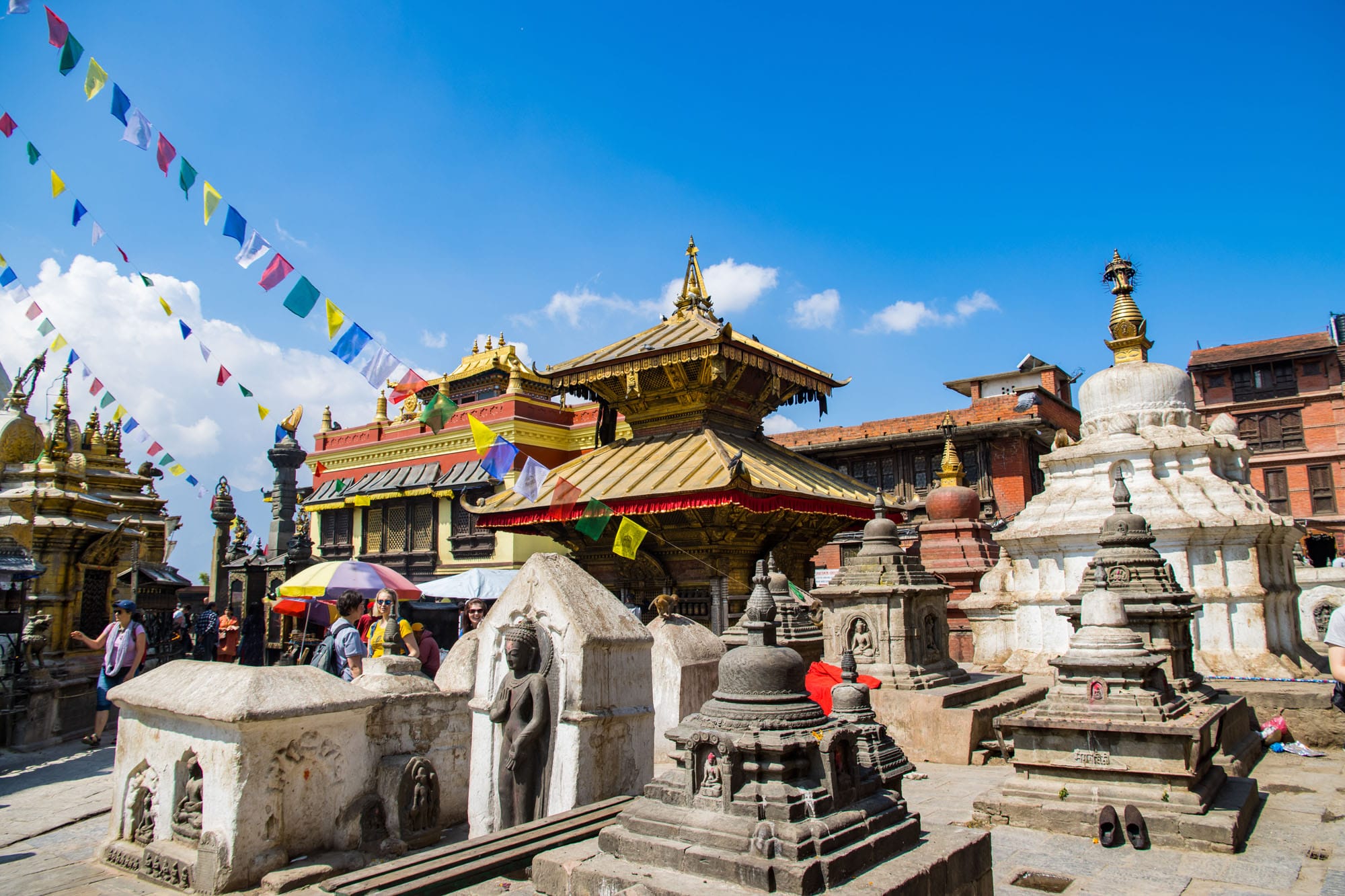Mountain Flight in Nepal
Highest Altitude
Trip Overview
Experience the breathtaking beauty of the Himalayas with a Mountain Flight in Nepal. An unforgettable adventure that offers a bird’s-eye view of the world’s highest peaks. This journey is ideal for those who want to witness the majesty of the Himalayas. Mountain flight takes you close to some of the most iconic mountains, including Mount Everest, Lhotse, Makalu, and Kanchenjunga, among others.
As you soar above the clouds, you’ll enjoy unobstructed views of snow-capped peaks, and glacial landscapes. Each seat on the aircraft is a window seat. This ensures that every passenger has the opportunity to capture stunning photographs.Additionally, immerse yourself in the awe-inspiring scenery. Mountain flight lasts approximately one hour, providing ample time to appreciate the grandeur of the mountains.
A certificate of completion is provided at the end of the flight, making this an experience you can cherish forever.Ultimately, if you’re an adventure enthusiast or simply looking for a serene escape, the Mountain Flight in Nepal is a must-do activity.
This one-day mountain flight adventure is the perfect way to experience the Himalayas up close.
Trip Highlights of Mountain Flight
- Spectacular Views of the Himalayas: Enjoy panoramic, unobstructed views of the world’s highest peaks, including Mount Everest, Lhotse, and Makalu.
- Guaranteed Window Seat: Every passenger is ensured a window seat, providing you with the best possible vantage point for photography and sightseeing.
- Convenient One-Day Adventure: Perfect for travelers with limited time, this one-hour flight offers a comprehensive way to witness the majesty of the Himalayas.
- Professional Service: Experience a seamless journey with hotel pick-up and drop-off, as well as attentive service throughout the flight.
- Certificate of Completion: Receive a personalized certificate to commemorate your incredible flight experience over the Himalayas.
- Ideal for All Travelers: Whether you’re an adventurer or seeking a more relaxed experience, this flight suits all ages and fitness levels. Thus, this trip offers a once-in-a-lifetime opportunity to see the Himalayas up close.
Itinerary
Your early morning begins with a hotel pick-up at 5:30 AM. As the city of Kathmandu rests under a pre-dawn blanket, your private vehicle quietly navigates the peaceful roads. The soft chill in the air adds to the thrill of the adventure ahead. Whether you’re traveling solo or with companions, there’s an undeniable excitement building up—today, you’ll fly parallel to the Himalayan range, including Mount Everest, without the need for trekking or high-altitude hiking. As the vehicle cruises toward Tribhuvan International Airport, your driver or guide may offer brief insights into the flight route and what peaks you’ll be viewing, helping you envision the magic before it unfolds.
Upon arriving at the domestic terminal, you’ll check in with the airline operating the mountain flight—typically Buddha Air, Yeti Airlines, or Shree Airlines. The process is smooth and efficient, as these flights are specifically organized to match optimal weather windows. You’ll receive your boarding pass, and if you're lucky, you may get a window seat assignment ensuring uninterrupted views. At this time, you’ll also be given a route map—a handy reference showing the major peaks you’ll be flying past, from Langtang Lirung in the east to Makalu in the west, with Everest right at the center. The waiting area buzzes with quiet anticipation as travelers prepare for one of the most scenic flights in the world.
At around 7:00 AM, you’ll board an aircraft, which offers unobstructed window views for all passengers. As the aircraft taxis down the runway, your excitement peaks—the horizon begins to glow with morning light. Once airborne, you’re immediately greeted with an epic panorama of green hills and distant ridgelines. The plane quickly gains altitude and begins its eastern arc, aligning with the great Himalayan wall. Soon, towering peaks like Gauri Shankar and Melungtse come into view. The pilots usually invite each passenger into the cockpit one at a time for a direct, crystal-clear view of Mount Everest through the front windshield—a surreal moment for many.
As the aircraft cruises at an altitude of around 25,000–27,000 feet, you’ll find yourself flying parallel to some of the most iconic peaks on Earth. Each passenger has a window seat, allowing uninterrupted views of majestic summits including Langtang, Shishapangma (in Tibet), Dorje Lakpa, Gauri Shankar, Lhotse, and the crown jewel—Mount Everest (8,848 m), piercing the sky with unmatched dominance. The flight crew provides detailed commentary, pointing out each peak as it comes into view, helping you identify and understand the significance of every snow-capped giant. The sun climbs higher in the sky, casting golden light across the mountain faces and creating a spellbinding visual experience. This 45–60 minute flight offers a bird’s-eye perspective of the world’s highest mountain range, something even seasoned trekkers rarely get to see in such sca
As the plane completes its circular route, the peaks begin to recede into the horizon and you gradually descend back into the Kathmandu Valley. The aircraft glides down smoothly and lands around 8:30 AM, concluding an unforgettable Himalayan journey. You’ll be escorted back to your hotel by private transport, passing through the now-bustling morning streets of Kathmandu. While the flight itself may have lasted just under an hour, the memory of flying face-to-face with Everest and her towering sisters stays with you forever. This short and comfortable tour is a perfect choice for those wanting to witness Nepal’s mighty mountains without trekking, making it an ideal experience for travelers of all ages and backgrounds.
Book Now
Inquiry / Customization
Got A Question?

Mr. Shishir Dhakal
Price Inclusion
- One-hour mountain flight with guaranteed window seat
- Hotel pick-up and drop-off
- Airport taxes and service charges
- Certificate of completion
Price Exclusion
- Personal expenses
- Tips and gratuities
- Meals and beverages
Additional Information
Mountains Visible During a Mountain Flight in Nepal
1. Mount Everest (8,848 meters / 29,029 feet)
- Notable Feature: The highest mountain in the world, locally called “Sagarmatha” in Nepali and “Chomolungma” in Tibetan.
- Highlight: The flight offers a breathtaking close-up view of its iconic summit, a dream for adventurers worldwide.
2. Lhotse (8,516 meters / 27,940 feet)
- Notable Feature: The fourth-highest mountain globally, sharing part of the Everest massif.
- Highlight: Known for its striking icy faces, it’s often seen in conjunction with Everest.
3. Makalu (8,463 meters / 27,766 feet)
- Notable Feature: A pyramid-shaped peak and the fifth-highest in the world.
- Highlight: Its distinctive structure makes it one of the most stunning sights from the air.
4. Cho Oyu (8,188 meters / 26,864 feet)
- Notable Feature: The sixth-highest mountain, located near the Tibetan border.
- Highlight: Its relatively gentle slopes offer a contrast to the sharp peaks nearby.
5. Dhaulagiri (8,167 meters / 26,795 feet)
- Notable Feature: The seventh-highest mountain in the world, dominating the western skyline of Nepal.
- Highlight: A significant landmark for trekkers on the Annapurna and Mustang regions.
5. Annapurna (8,091 meters / 26,545 feet)
- Notable Feature: The world’s tenth-highest peak and part of a massif with several trekking destinations.
- Highlight: The range is home to deep valleys and one of the most dangerous climbing routes in history.
6.Langtang Lirung (7,234 meters / 23,734 feet)
- Notable Feature: The highest peak in the Langtang range, located north of Kathmandu.
- Highlight: Its close proximity to the capital makes it a prominent view for mountain flight enthusiasts.
7. Gauri Shankar (7,134 meters / 23,406 feet)
- Notable Feature: Named after the Hindu deities Shiva (Shankar) and his consort Parvati (Gauri).
- Highlight: Revered as a sacred peak, it offers awe-inspiring views.
8. Ama Dablam (6,812 meters / 22,349 feet)
- Notable Feature: A pyramid-like mountain, often called the “Matterhorn of the Himalayas.”
- Highlight: Its dramatic ridges and hanging glaciers are a sight to behold.
9. Manaslu (8,163 meters / 26,781 feet)
- Notable Feature: The eighth-highest peak in the world, known for its beauty and cultural richness.
- Highlight: Part of the Manaslu Circuit trek, visible in all its glory during clear weather flights.
Lukla Flight and Cancellation
Flights to Lukla, the gateway to the Everest region, are a thrilling part of the Everest trekking experience. These flights usually operate from either Kathmandu or Ramechhap, depending on the season and air traffic regulations. Due to the high-altitude terrain and unpredictable mountain weather, Lukla flights are highly sensitive to weather conditions and are frequently delayed or even canceled—especially during the monsoon and winter seasons. We strongly advise trekkers to keep at least 1-2 buffer days in their itinerary to accommodate potential flight disruptions. In case of prolonged cancellations, helicopter charter options may be available at additional cost. At Mount Elegance Trek and Expedition, we closely monitor flight schedules and weather updates to keep you informed and assist with alternative arrangements as needed, ensuring your journey remains smooth and stress-free.
Best Season for Mountain Flights in Nepal
Mountain flights in Nepal are best experienced during the pre-monsoon (spring) and post-monsoon (autumn) seasons. Here’s a detailed breakdown of these periods and why they are ideal for scenic Himalayan flights:
1. Spring Season (March to May)
Why It’s Ideal:
- Clear Skies in the Morning: Early mornings typically offer crystal-clear views, with vibrant sunlight illuminating the snow-capped peaks.
- Mild Temperatures: The weather is pleasantly warm at lower altitudes, making the overall experience comfortable.
- Blooming Rhododendrons: The Himalayan landscape comes alive with colorful rhododendron blossoms, adding beauty to the scenery.
- Minimal Disruptions: Spring is relatively dry, with fewer chances of flight delays or cancellations due to weather.
Highlights:
- Breathtaking visibility of iconic peaks like Everest, Annapurna, and Langtang.
- The interplay of snow and lush greenery creates a striking visual contrast.
- Ideal for photography enthusiasts seeking vivid colors and dramatic lighting.
2. Autumn Season (September to November)
Why It’s Ideal:
- Post-Monsoon Clarity: The monsoon rains wash away dust and pollution, offering unparalleled visibility of the mountains.
- Stable Weather: Clear, sunny mornings and mild daytime temperatures ensure smooth flight experiences.
- Festive Vibes: This season coincides with major Nepali festivals like Dashain and Tihar, adding a cultural dimension to the trip.
Highlights:
- Spectacular views of snow-covered peaks against bright blue skies.
- Calm winds and optimal flying conditions ensure a turbulence-free journey.
- The season attracts fewer clouds, offering unobstructed views of towering Himalayan giants.
3. Other Seasons
Winter (December to February):
- Pros: Clear skies and fewer crowds make this a good time for flights. The crisp winter air enhances visibility.
- Cons: Extremely cold temperatures in the higher altitudes, with the possibility of fog in the early morning hours, can occasionally delay flights.
Summer/Monsoon (June to August):
- Pros: Stunning views of lush greenery and waterfalls during rare clear days.
- Cons: Heavy rains, cloud cover, and unpredictable weather conditions make this the least favorable season for mountain flights.
Time of Day:
Regardless of the season, the early morning (6:30 AM – 9:00 AM) is the best time for mountain flights. The air is cooler, skies are clearer, and visibility is at its peak before the day’s heat creates haze or cloud formations.
Frequently Asked Questions(FAQs)
How reliable are the flights to Lukla airport?
Flights to Lukla airport, also known as Tenzing-Hillary Airport, can be unpredictable due to the airport’s unique location and weather conditions. Our team at Mount Elegance Treks and Expedition recommends the following:
Flight Schedule: Flights to Lukla usually depart from Kathmandu’s Tribhuvan International Airport (KTM) in the morning, and the schedule may change depending on weather conditions.
Weather Conditions: Lukla airport is prone to weather delays and cancellations, especially during the monsoon season (June to August) and winter months (December to February).
Flight Cancellation: In case of flight cancellation, our team will work with you to find alternative arrangements, including accommodation and transportation.
Rebooking: If your flight is delayed or cancelled, you can rebook on a later flight, subject to availability.
Tips:
Book Flexible Flights: Book flights with flexible rebooking policies to accommodate any changes in your itinerary.
Check Weather Forecast: Check the weather forecast before your flight to Lukla, and be prepared for any changes.
Have a Contingency Plan: Have a contingency plan in place, including accommodation and food, in case of flight delays or cancellations.
Lukla Airport Information:
Tenzing-Hillary Airport: The airport in Lukla has a limited capacity, and flights may be delayed or cancelled due to weather conditions.
* Airport Facilities: The airport has basic facilities, including a few restaurants, shops, and restrooms.
Our team at Mount Elegance Treks and Expedition can assist with flight bookings, rebooking, and alternative arrangements to ensure a smooth journey to Lukla airport. We recommend checking with your airline and our team for the latest information on flights to Lukla.
How do I book domestic flights within Nepal?
Booking domestic flights within Nepal is a straightforward process. Our team at Mount Elegance Treks and Expedition is happy to assist you with booking flights. Here’s a step-by-step guide:
Contact Us: Simply contact us through our website, email, or phone, and let us know your travel details, including your departure and arrival dates, route, and class of service.
Choose Your Flight: We will provide you with a selection of flights to choose from, and help you select the best option based on your needs and budget.
Payment: Once you’ve confirmed your flight, we will guide you through the payment process, which can be made by credit card, bank transfer, or cash.
Booking Confirmation: After payment, we will send you a booking confirmation with your flight details, including your flight number, departure and arrival times, and seat allocation.
Domestic Flight Operators:
Nepal Airlines: The national carrier of Nepal, offering flights to major destinations, including Lukla, Pokhara, and Biratnagar.
Yeti Airlines: A popular domestic airline, offering flights to major destinations, including Lukla, Pokhara, and Bharatpur.
Simrik Air: A regional airline, offering flights to major destinations, including Lukla, Phaplu, and Jomsom.
Tips:
Book in Advance: Book your domestic flights in advance to ensure availability, especially during peak travel seasons.
Check Flight Schedule: Check the flight schedule in advance to plan your itinerary and avoid any last-minute changes.
Have a Backup Plan: Have a backup plan in place, including accommodation and transportation, in case of flight delays or cancellations.
Our team at Mount Elegance Treks and Expedition is committed to providing you with a seamless and stress-free booking experience. We are always available to answer any questions you may have and to assist with any changes to your flight booking.
What travel insurance should I get for Nepal?
Travel insurance is an essential aspect of planning your trip to Nepal. Our team at Mount Elegance Treks and Expedition recommends that you purchase a travel insurance policy that covers the following:
Trip Cancellation: Covers the cost of your trip if you need to cancel due to unexpected events such as illness, accident, or natural disasters.
Medical Emergency: Covers medical expenses in case of an emergency, including evacuation and repatriation.
Adventure Activities: Covers activities such as trekking, mountaineering, and rafting, which are popular in Nepal.
Travel Delay: Covers the cost of accommodations and meals if your flight is delayed or cancelled.
Lost or Stolen Luggage: Covers the cost of replacing lost or stolen luggage.
Recommended Insurance Providers:
Allianz: Offers a range of travel insurance policies, including adventure travel insurance.
AXA: Provides comprehensive travel insurance coverage, including medical emergency and trip cancellation.
Travel Guard: Offers travel insurance policies that cover trip cancellation, medical emergency, and adventure activities.
Features to Look for:
Single Trip or Annual Policy: Choose a policy that covers your specific travel plans.
Policy Exclusions: Check the policy exclusions, such as pre-existing medical conditions.
Deductible: Understand the deductible amount and how it affects your claim.
claims Process: Research the claims process and ensure it is easy and hassle-free.
Tips:
Purchase Insurance Early: Buy insurance as soon as you book your trip to ensure coverage.
Read the Fine Print: Carefully read the policy terms and conditions to understand what is covered and what is not.
* Check the Policy Limits: Understand the policy limits and ensure they meet your needs.
Our team at Mount Elegance Treks and Expedition recommends that you purchase travel insurance to ensure a safe and enjoyable trip to Nepal. We can provide you with more information on travel insurance providers and help you choose the right policy for your needs.
Does travel insurance cover helicopter rescue in Nepal?
Yes, many travel insurance policies cover helicopter rescue in Nepal, but it’s essential to check the policy terms and conditions. Our team at Mount Elegance Treks and Expedition recommends that you purchase a travel insurance policy that includes emergency evacuation, including helicopter rescue, in the following situations:
Accident or Illness: If you’re involved in an accident or suffer from a serious illness while trekking or traveling in Nepal, your insurance policy may cover helicopter rescue to a medical facility.
Natural Disaster: If a natural disaster such as an earthquake or landslide occurs, and you’re in a remote area, your insurance policy may cover helicopter rescue to safety.
High-Altitude Sickness: If you’re trekking at high altitudes and experience altitude sickness, your insurance policy may cover helicopter rescue to a lower altitude for medical treatment.
Policy Exclusions:
Pre-Existing Medical Conditions: Some policies may not cover pre-existing medical conditions, so it’s essential to disclose any medical conditions when purchasing insurance.
Intentional Actions: Policies may not cover helicopter rescue if the emergency is caused by intentional actions, such as reckless behavior.
Recommended Insurance Providers:
Allianz: Offers emergency evacuation, including helicopter rescue, in Nepal.
AXA: Provides coverage for medical emergencies, including helicopter rescue, in Nepal.
Travel Guard: Offers emergency evacuation, including helicopter rescue, in Nepal, subject to policy terms and conditions.
Tips:
Check the Policy Terms: Carefully read the policy terms and conditions to understand what is covered and what is not.
Understand the Deductible: Understand the deductible amount and how it affects your claim.
* Purchase Insurance Early: Buy insurance as soon as you book your trip to ensure coverage.
Our team at Mount Elegance Treks and Expedition recommends that you purchase travel insurance that covers helicopter rescue in Nepal to ensure a safe and enjoyable trip. We can provide you with more information on travel insurance providers and help you choose the right policy for your needs.
What common health issues do travelers face in Nepal?
Nepal is a beautiful country with a unique climate and culture, but it can also present some health challenges for travelers. Our team at Mount Elegance Treks and Expedition wants to ensure that you’re prepared and aware of the common health issues that travelers may face in Nepal:
Altitude Sickness: Also known as Acute Mountain Sickness (AMS), this can occur when traveling to high altitudes, such as during trekking or climbing. Symptoms include headaches, nausea, and fatigue.
Dehydration: Nepal’s climate can be hot and dry, leading to dehydration if you don’t drink enough water. Symptoms include headaches, fatigue, and dark urine.
Insect-Borne Illnesses: Mosquito-borne illnesses such as dengue fever and malaria are present in Nepal, especially during the monsoon season.
Food and Water-Borne Illnesses: Travelers can be susceptible to food and water-borne illnesses, such as diarrhea, stomach cramps, and vomiting, especially if they don’t drink bottled or purified water.
Heat-Related Illnesses: Nepal’s heat and humidity can cause heat exhaustion and heatstroke, especially during the summer months.
Cold-Related Illnesses: At higher altitudes, the temperature can drop significantly, leading to cold-related illnesses such as hypothermia and frostbite.
Prevention and Preparation:
Consult Your Doctor: Before traveling to Nepal, consult your doctor about any health concerns and get recommended vaccinations.
Pack Essentials: Pack essentials such as sunscreen, insect repellent, and medications for altitude sickness and other conditions.
Stay Hydrated: Drink plenty of bottled or purified water to stay hydrated.
Eat Clean Food: Eat clean food and avoid undercooked meat, raw vegetables, and untreated water.
Acclimatize: Acclimatize to high altitudes by ascending gradually and giving your body time to adjust.
What to Do in Case of an Emergency:
Seek Medical Attention: If you experience any symptoms of illness or injury, seek medical attention immediately.
Contact Your Embassy: Contact your embassy or consulate for assistance and guidance.
Call Our Emergency Number: Our team has an emergency number that you can call in case of an emergency.
Our team at Mount Elegance Treks and Expedition is committed to providing you with a safe and healthy travel experience in Nepal. We can provide you with more information on health and safety tips and recommendations for preventing common health issues.
What social projects can I support in Nepal?
As a responsible traveler, supporting social projects in Nepal is a great way to give back to the community and make a positive impact on the lives of locals. Our team at Mount Elegance Treks and Expedition wants to share some information on social projects you can support in Nepal.
Community Development Projects:
Education and Literacy: Support schools and literacy programs that provide education to underprivileged children and adults.
Health and Sanitation: Support health clinics and sanitation projects that improve access to healthcare and hygiene facilities in rural areas.
Women’s Empowerment: Support women’s empowerment initiatives that promote gender equality, skills development, and economic independence.
Disaster Relief and Recovery: Support disaster relief and recovery efforts that provide aid to affected communities.
Environmental Conservation Projects:
Tree Planting and Reforestation: Support tree planting and reforestation efforts that aim to restore damaged forests and promote sustainable land use.
Wildlife Conservation: Support wildlife conservation projects that protect endangered species and their habitats.
Sustainable Agriculture: Support sustainable agriculture projects that promote eco-friendly farming practices and improve food security.
Cultural Preservation Projects:
Cultural Heritage Preservation: Support projects that preserve Nepal’s rich cultural heritage, including temples, monuments, and traditional crafts.
Art and Craft Development: Support art and craft development projects that promote traditional skills and empower local artists.
Festivals and Events: Support festivals and events that celebrate Nepal’s diverse cultural heritage.
How to Support Social Projects:
Donate to Reputable Organizations: Donate to reputable organizations that are working on social projects in Nepal.
Volunteer Your Time: Volunteer your time and skills to support social projects and community development initiatives.
Support Local Businesses: Support local businesses that are run by women or marginalized communities.
Spread Awareness: Spread awareness about the importance of social responsibility and sustainable tourism practices.
Mount Elegance Treks and Expedition’s Commitment:
Partnering with Local Organizations: We partner with local organizations and community groups to support social projects and conservation initiatives.
Supporting Sustainable Tourism: We support sustainable tourism practices that benefit local communities and promote cultural heritage.
* Raising Awareness: We raise awareness about the importance of social responsibility and sustainable tourism practices among our travelers and partners.
Our team at Mount Elegance Treks and Expedition is committed to making a positive impact on the communities we visit in Nepal. If you have any questions or concerns about social projects or how to support them, please don’t hesitate to ask.
Are there volunteering opportunities in Nepal?
Yes, Nepal offers a wide range of volunteering opportunities for those who want to make a positive impact in the country. Our team at Mount Elegance Treks and Expedition wants to share some information on volunteering opportunities in Nepal and how you can get involved.
Types of Volunteering Opportunities:
Community Development: Volunteer in community development projects that focus on education, health, and sanitation.
Environmental Conservation: Join environmental conservation projects that aim to protect Nepal’s unique biodiversity and natural resources.
Cultural Preservation: Volunteer in cultural preservation projects that focus on preserving Nepal’s rich cultural heritage.
Disaster Relief: Support disaster relief efforts and help communities affected by natural disasters.
Volunteering Programs:
Teaching English: Teach English to local children and support education initiatives in rural areas.
Medical Assistance: Provide medical assistance and support healthcare projects in remote areas.
Conservation Work: Participate in conservation work, such as tree planting and wildlife conservation.
Community Tourism: Support community-based tourism initiatives and help local communities benefit from tourism.
How to Get Involved:
Research Reputable Organizations: Research reputable organizations that offer volunteering opportunities in Nepal.
Check Volunteer Requirements: Check the requirements for volunteering, including age, skills, and experience.
Apply through a Volunteer Agency: Apply through a volunteer agency that specializes in Nepal volunteering opportunities.
Contact Us: Contact us at Mount Elegance Treks and Expedition to learn more about volunteering opportunities in Nepal.
Benefits of Volunteering in Nepal:
Make a Difference: Make a positive impact in the lives of locals and contribute to the development of Nepal.
Cultural Immersion: Experience Nepali culture and way of life by living and working with local communities.
Personal Growth: Develop new skills, gain experience, and challenge yourself in a new and exciting environment.
Travel and Explore: Explore Nepal’s stunning landscapes and attractions while making a difference in the community.
Mount Elegance Treks and Expedition’s Partnership:
Partnership with Local Organizations: We partner with local organizations and community groups to offer volunteering opportunities in Nepal.
Support for Volunteer Projects: We support volunteer projects and provide resources to help make a positive impact.
* Expert Guidance: Our team provides expert guidance and support to volunteers to ensure a successful and rewarding experience.
Our team at Mount Elegance Treks and Expedition is committed to making a positive impact in Nepal through volunteering and community development projects. If you have any questions or concerns about volunteering opportunities in Nepal, please don’t hesitate to ask.
What services does Mount Elegance Treks offer?
At Mount Elegance Treks and Expedition, we offer a wide range of services to make your adventure in Nepal a memorable and hassle-free experience. Our team of experts is dedicated to providing you with the best possible services, from trekking and peak climbing to cultural tours and wilderness expeditions.
Trekking and Expedition Services
We offer a variety of trekking and expedition services, including:
Trekking: We offer guided trekking services to popular destinations such as the Everest Base Camp, Annapurna Circuit, and Langtang Valley.
Peak Climbing: Our experienced guides and climbers will help you conquer some of the highest peaks in the world, including Island Peak and Mera Peak.
Wildlife Tours: Join us on a wildlife tour to see the majestic Bengal tiger, one-horned rhinoceros, and other endangered species in their natural habitats.
Cultural Tours: Explore Nepal’s rich cultural heritage on a guided tour, visiting ancient temples, monasteries, and traditional villages.
Logistical Services
We also offer a range of logistical services, including:
Hotel Booking: We can book your hotel accommodations in Kathmandu and other destinations in Nepal.
Transportation: Our team can arrange for transportation to and from the trekking start point, as well as during the trek.
Permits and Licenses: We will handle all necessary permits and licenses for your trek or expedition.
Camping and Lodging: We can provide camping and lodging facilities during your trek or expedition.
Support Services
Our team is dedicated to providing you with support services, including:
Guided Tours: Our experienced guides will accompany you on your trek or expedition, providing valuable insights and support.
Cuisine: We can provide you with delicious and nutritious meals during your trek or expedition.
First Aid: Our guides are trained in first aid and can provide medical assistance in case of an emergency.
Communication: We can provide you with communication facilities, including satellite phones and internet access.
Mount Elegance Treks’ Commitment to Quality
At Mount Elegance Treks and Expedition, we are committed to providing you with the highest quality services and experiences. Our team of experts is dedicated to ensuring your safety, happiness, and satisfaction. We look forward to welcoming you to Nepal and sharing our country’s beauty and culture with you.
How experienced are Mount Elegance Treks guides?
At Mount Elegance Treks and Expedition, we take pride in our team of experienced and knowledgeable guides who are dedicated to providing you with a safe and enjoyable trekking experience in Nepal. Our guides are the backbone of our company, and we invest heavily in their training and development to ensure that they meet the highest standards of professionalism and expertise.
Guide Qualifications and Experience
Our guides have a minimum of 5 years of experience in leading treks and expeditions in Nepal, and many have been guiding for 10-20 years or more. They are all certified by the Nepal Government and have undergone extensive training in areas such as:
First Aid and Emergency Response: Our guides are trained in basic first aid and emergency response, and know how to handle situations such as altitude sickness, injuries, and illnesses.
Mountain Safety and Risk Management: Our guides are trained in mountain safety and risk management, and know how to assess and mitigate risks on the mountain.
Cultural Sensitivity and Awareness: Our guides are trained in cultural sensitivity and awareness, and know how to interact with local communities in a respectful and sensitive manner.
Language and Communication: Our guides are proficient in multiple languages, including English, Nepali, and other local dialects, and know how to communicate effectively with clients from diverse backgrounds.
Guide-to-Cliuent Ratio
We believe in providing a high guide-to-client ratio to ensure that each client receives personalized attention and care. Our standard ratio is 1 guide to 4 clients, but we can adjust this ratio to meet the needs of individual groups.
Mount Elegance Treks’ Guide Selection Process
We select our guides carefully, based on their experience, qualifications, and personal qualities. We look for guides who are not only knowledgeable and skilled, but also friendly, enthusiastic, and dedicated to providing exceptional client service. We are proud of our team of guides, and we know that they will provide you with a memorable and enjoyable trekking experience in Nepal.
What makes Mount Elegance Treks different from other trekking companies?
At Mount Elegance Treks and Expedition, we’re proud to stand out from the crowd with our unique approach to trekking and expedition services. While other companies may offer similar itineraries and tours, we focus on providing a personalized, authentic, and sustainable experience that sets us apart.
Our Commitment to Sustainability
We’re dedicated to responsible and sustainable tourism practices, which means we prioritize the well-being of our clients, local communities, and the environment. We work with locally-owned tea houses and lodges, which helps to support the local economy and preserves the natural beauty of the region.
Personalized Travel Experience
We believe that every traveler is unique, and we tailor our itineraries to meet the specific needs and interests of our clients. Whether you’re a seasoned adventurer or a first-time trekker, we’ll work with you to create a personalized itinerary that ensures an unforgettable experience.
Local Expertise and Knowledge
Our team of guides and staff are locals who have grown up in the mountains and have extensive knowledge of the region. They’ll share their insights and stories with you, providing a deeper understanding of the culture, history, and natural beauty of Nepal.
Innovative and Sustainable Practices
We’re constantly looking for ways to improve our operations and minimize our impact on the environment. We use eco-friendly materials, reduce waste, and support conservation efforts in the region.
Mount Elegance Treks’ Core Values
At Mount Elegance Treks, we’re guided by a set of core values that reflect our commitment to:
Quality: We strive for excellence in everything we do.
Integrity: We operate with transparency and honesty.
Respect: We respect our clients, local communities, and the environment.
Innovation: We’re always looking for new and better ways to provide exceptional service.
Experience the Mount Elegance Treks Difference
When you choose Mount Elegance Treks, you’re not just booking a trek – you’re joining a community of like-minded travelers who value sustainability, cultural exchange, and adventure. We look forward to welcoming you to Nepal and sharing our passion for trekking and exploration with you.
Can Mount Elegance Treks arrange custom itineraries?
Here is a potential answer for the FAQ question:
Can Mount Elegance Treks arrange custom itineraries?
Absolutely! At Mount Elegance Treks, we understand that every traveler is unique, with their own interests and preferences. That’s why we offer custom itinerary planning services to tailor your Nepal travel experience to your specific needs and desires. Whether you’re looking to add or remove activities, extend your stay, or explore off-the-beaten-path destinations, our expert team is happy to work with you to create a personalized trip that exceeds your expectations. Simply contact us to share your ideas and let us take care of the rest!
Does Mount Elegance Treks offer group discounts?
Here is a potential answer for the FAQ question:
Does Mount Elegance Treks offer group discounts?
Yes, we do! Mount Elegance Treks offers special group discounts for 8 or more people traveling together. By booking as a group, you can enjoy significant savings on our already competitive pricing. Whether you’re a school group, a corporate team, or a family reunion, we’d be happy to work with you to create a custom itinerary and provide a quote for your group. Simply contact us with your group details and we’ll take care of the rest!
Does Mount Elegance Treks provide airport pickup?
Here is a potential answer for the FAQ question:
Does Mount Elegance Treks provide airport pickup?
Yes, we do! As part of our commitment to making your travel experience seamless, Mount Elegance Treks offers complimentary airport pickup and drop-off services for all our clients. Upon your arrival at Tribhuvan International Airport in Kathmandu, our representative will be waiting to greet you and escort you to your hotel. Similarly, upon your departure, we’ll ensure that you’re transferred to the airport on time for your flight. This service is included in your package, so you can relax and focus on the excitement of your upcoming adventure!
Are Mount Elegance Treks guides certified in first aid?
Here is a potential answer for the FAQ question:
Are Mount Elegance Treks guides certified in first aid?
Yes, our guides are highly trained and certified in wilderness first aid. We take the safety and well-being of our clients very seriously, and our guides undergo regular training to ensure they are equipped to respond to any medical emergency that may arise during the trek. Our guides are certified in basic life support, wound management, and altitude sickness prevention, among other topics. Additionally, we carry a comprehensive first aid kit with us on every trek, and our guides are trained to use it effectively. You can feel confident and secure knowing that you’re in good hands with Mount Elegance Treks!
Does Mount Elegance Treks arrange permits for trekking?
Here is a potential answer for the FAQ question:
Does Mount Elegance Treks arrange permits for trekking?
Yes, we take care of all the necessary permits and paperwork for our treks. As a licensed and reputable trekking operator, we have established relationships with the relevant authorities to ensure that all necessary permits are obtained in a timely and efficient manner. This includes trekking permits, national park fees, and any other required documents. Our team will arrange and obtain all the necessary permits on your behalf, so you can focus on preparing for your adventure. We’ll take care of the details, so you can enjoy a hassle-free trekking experience with Mount Elegance Treks!
What payment methods does Mount Elegance Treks accept?
Here is a potential answer for the FAQ question:
What payment methods does Mount Elegance Treks accept?
At Mount Elegance Treks, we offer a range of payment options to make booking your trek as convenient as possible. We accept bank transfers, credit card payments (including Visa, Mastercard, and American Express), and online payments through our website. We also accept payment through PayPal. For bookings, a deposit of 20% is required to secure your spot, with the balance due 30 days prior to your trek departure date. Our payment process is secure and transparent, and we’ll provide you with a detailed invoice and payment instructions once you’ve booked your trek. If you have any questions or concerns about payment, feel free to contact us!
What happens if my Lukla flight is delayed or cancelled?
Here is a potential answer for the FAQ question:
What happens if my Lukla flight is delayed or cancelled?
Lukla flights can sometimes be delayed or cancelled due to weather conditions, air traffic, or technical issues. If your flight is delayed or cancelled, our team will be notified immediately and we will work with you to find the best alternative solution. We have established relationships with other airlines and transportation providers, and we can offer you options such as a helicopter flight, a road transfer to Jiri, or a postponement of your trek to the next available flight. Our goal is to minimize any disruption to your itinerary and ensure that you can continue with your trek as planned. We will keep you updated on the status of your flight and provide you with regular communication and support to ensure a smooth and stress-free experience. Don’t worry, we’ve got you covered in case of any unexpected delays or cancellations!
Are there alternative routes if flights to Lukla are not available?
Here is a potential answer for the FAQ question:
Are there alternative routes if flights to Lukla are not available?
Yes, we have alternative routes and options available if flights to Lukla are not available. In such cases, we can arrange a road transfer to Jiri (1,950m/6,398ft) and then a trek to Lukla, which takes around 2-3 days. This route offers a scenic and relatively easy trek, with stunning views of the surrounding mountains. We can also arrange a charter helicopter from Kathmandu to Lukla, which can be a more convenient option. Our experienced team will assess the situation and provide you with the best available options, ensuring that you can still achieve your trekking goals. We are dedicated to making your trekking experience seamless and enjoyable, even in the face of unexpected challenges.
What permits are required for Everest region treks?
Here is a potential answer for the FAQ question:
What permits are required for Everest region treks?
To trek in the Everest region, you will need to obtain several permits, which are regulated by the Nepalese government. The main permits required are: the TIMS (Trekker’s Information Management System) card, the Sagarmatha Pollution Control Committee (SPCC) permit, and the Everest National Park entrance fee. We will assist you with the permit process, ensuring that all necessary documents are obtained and in order. Our team will also provide you with information on any additional permits or fees required for specific treks, such as the Everest Base Camp or Gokyo Lakes treks. Don’t worry about the paperwork
- we’ll take care of it, so you can focus on preparing for your amazing adventure in the Everest region!

